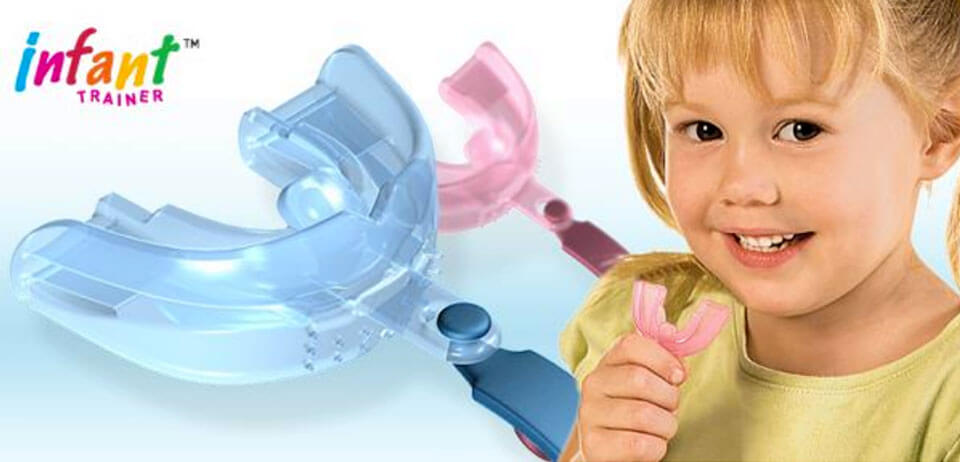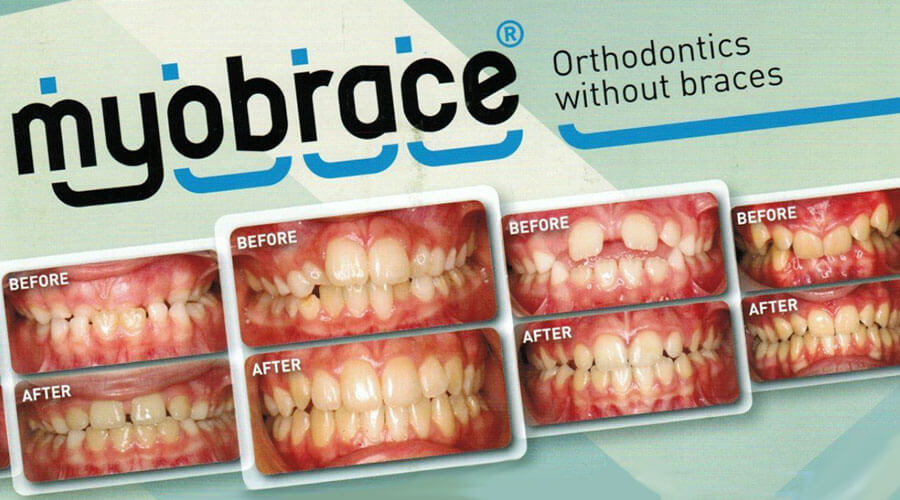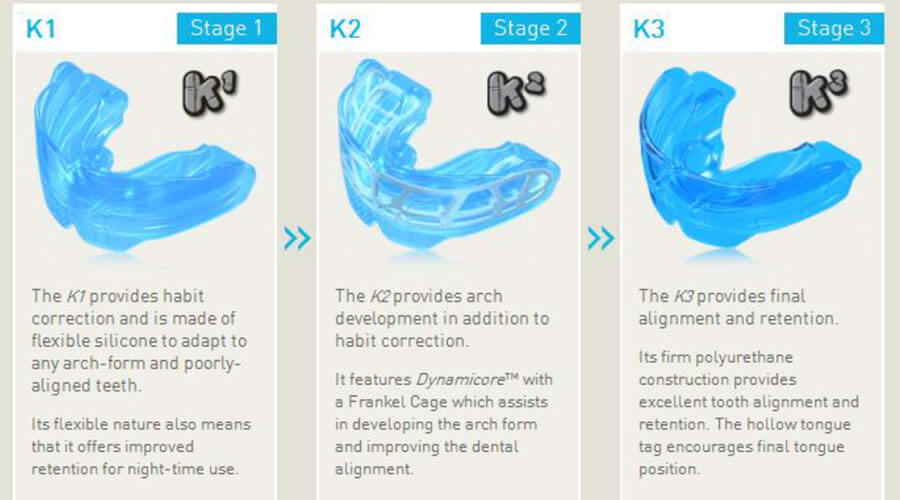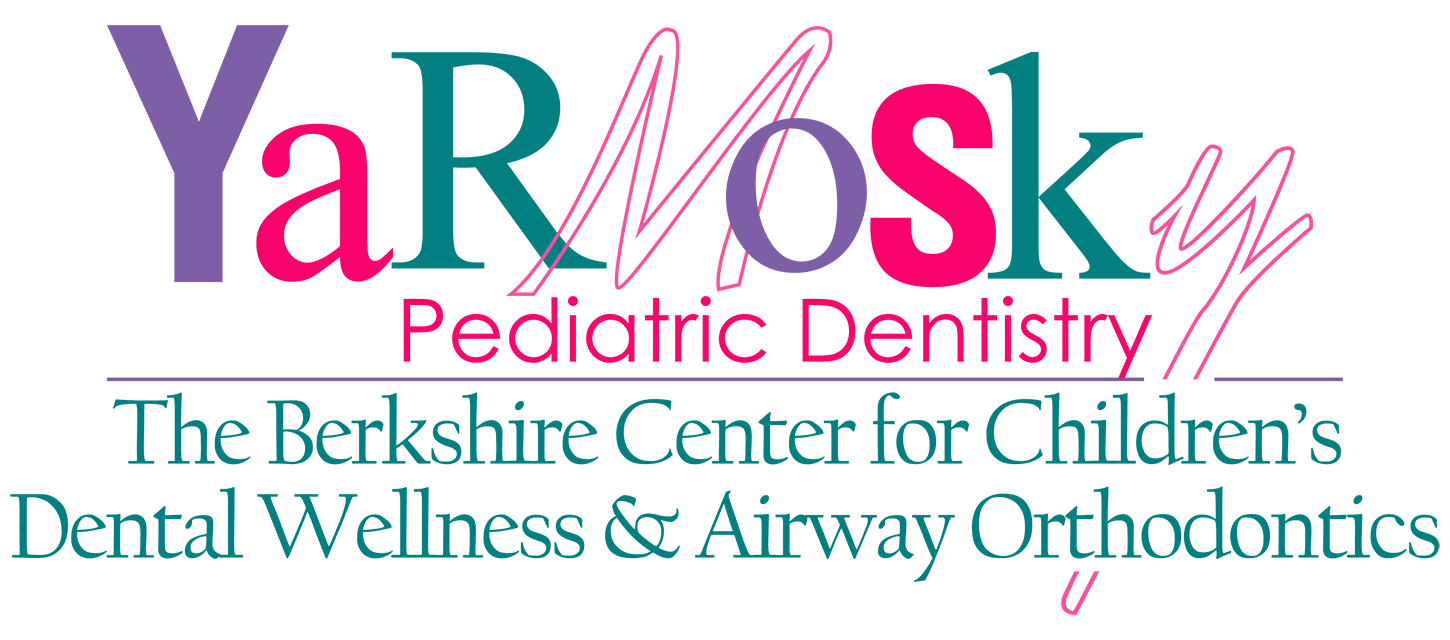Myobrace®: Straight Teeth, Your Way
At Yarmosky Pediatric Dentistry, we strive to provide our patients with the latest treatments for airway positioning, pediatric sleep apnea and sleep disordered breathing.
Studies indicate that a child’s facial and dental growth and development can be significantly impacted by the use of new treatments that work to provide proper nasal breathing, tongue position and closed lips. The position and shape of the teeth and jaws has also been connected to sleep disorders such as snoring and sleep apnea which affect millions of people of all ages.
Receiving early treatment offers the best results and lifelong benefits to both dental and overall health, but older teens and adults can also experience the benefits of airway orthodontics.
What are the causes of crooked teeth?
Did you know, 3 out of 4 children have crowded teeth and incorrectly developing jaws? These problems can be seen from as early as 3-5 years of age. Modern research has shown that crowded teeth, incorrect jaw development and other orthodontic problems are not caused by big teeth in small jaws or hereditary factors. Mouth breathing, tongue thrusting, reverse swallowing and thumb sucking (known as incorrect myofunctional habits) are the real causes. Allergies, asthma and an open mouth posture also contribute to incorrect jaw development. Growing up, most of us have had one or more of these myofunctional problems, which may have been the cause of incorrect dental and facial development.
Just getting braces, with or without extractions, does not address the underlying causes of crooked teeth. This is why once the braces are removed, the teeth usually crowd up again, unless poor oral habits are corrected. This is why treatment with braces alone commonly results in the need for life-long retainers.
The concept of AIRWAY ORTHODONTICS approaches orthodontic treatment in a more integrative manner and takes into account your child as a whole, not just your child’s teeth.
The treatment goal in Airway Orthodontics is not to just align and straighten teeth to improve appearance and bite but to also assist the growing child with the development of the healthiest possible airway for their age. A healthy airway leads to better breathing, better sleeping, better overall health, better facial and jaw growth and can either treat or prevent the symptoms associated with Sleep Disordered Breathing and Obstructive Sleep Apnea.
The MyoBrace® system utilizes a series of both removable oral appliances, called “Trainers”, and Myofunctional Training Exercises to help your child grow, breathe and sleep better by dealing with the underlying issues that can cause “crooked teeth” and “narrow palates” in the first place – resulting in not only a beautiful smile but also a healthy body.
Studies indicate that a child’s facial and dental development can be significantly impacted by the use of airway centered orthodontic treatments. These treatments, when combined with myofunctional training, work to establish proper nasal breathing, proper lip seal, proper tongue position and correct swallowing patterns.
The position and shape of the teeth and jaws has also been connected to sleep disorders such as snoring and sleep apnea, conditions which affect millions of people of all ages. Receiving early treatment, between the ages of 3-10 years, when a child’s face and airway is at the height of its development, offer the best results and lifelong benefits to both dental and overall health. The earlier treatment starts, the less costly and more conservative overall treatment can be. In fact, most kids that start treatment early, DO NOT NEED “BRACES.” Older teens can also experience the benefits of airway orthodontics, as we can incorporate Myobrace® trainers and Myofunctional Training into more traditional orthodontic treatment with “braces.”
At Yarmosky Pediatric Dentistry, we strive to provide our patients with the latest treatments for healthy airway growth, pediatric sleep apnea and sleep disordered breathing moving Pediatric Orthodontic treatment into the 21st Century.
The beginning stages of mild malocclusions can begin at a very early age, brought on by habits such as thumb sucking, binky use, mouth breathing and poor tongue positioning, as well as the presence of “soft tissue tethers” or tight frenums that can cause “tongue-tie” or “lip-tie.”
Clues about Soft Tissue Dysfunction
Tooth alignment
65% of children have malocclusion (an incorrect bite) by kindergarten and more may go on to develop a malocclusion and poor airway development due to breathing dysfunction like mouth-breathing.
Examples:
- LACK OF SPACES between the baby teeth or CROWDING in baby teeth
- An “OPEN BITE”- the canine teeth may appear “longer” because the top front 4 teeth are actually “pushed up”
- A “DEEP BITE” – the top teeth cover the bottom teeth
- A “CROSS BITE”- in the front or back teeth
- Learn More about Orthodontic Concerns
Breathing Pattern
For correct nasal breathing, it is important that the lips are properly closed so that your child can breathe easily through the nose – Mouth Breathing is considered a major RISK FACTOR for the development of poor facial and airway growth, Sleep Disordered Breathing and the development of SLEEP APNEA. When breathing, is your child’s mouth generally open or closed? Does your child breathe through their mouth or their nose? For correct nasal breathing, it is important that the lips are properly closed so that your child can breathe easily through the nose.
Jaw growth
- Does your child have an excessive overbite or underbite?
- Is your child’s palate narrow? Does the roof of the mouth look more like a “U” or a “V’?
- Where is your child’s tongue? If it is not resting on the roof of the mouth or if it is “hanging low,” this is a problem.
Frenum Attachments
- Can your child’s tongue easily touch the roof of the mouth when they open wide?
- Does just the “tip” of the tongue touch or can the middle part of the tongue touch too?
Swallowing
- When you child swallows, does their chin purse or their lips move?
- Do they “bob” their head when swallowing?
- Does your child frequently choke or gag?
- Are they messy eaters?
- Do they eat fast and have to take a break to breathe?
Oral Habits
- Cheek or lip biting
- Grinding/Clenching of the teeth
- Thumb, finger or pacifier sucking
MyoBrace® Treatment Solutions

At Yarmosky Pediatric Dentistry, we are proud to offer the MyoBrace® system as part of our INTEGRATIVE AND AIRWAY CENTERED ORTHODONTIC treatment options. Pediatric Dentists and Orthodontist have utilized the MyoBrace® System of practice around the world for over 30 years with excellent dental and health results.
Benefits of the MyoBrace® system:
- Uses light forces to naturally align the teeth and re-train the oral-facial muscles to function properly
- Unlike traditional orthodontics, Myobrace® is not worn all the time
- Allows patients to easily brush and floss your teeth
- No dietary restrictions
- Teaches proper nasal breathing, proper tongue placement and correct swallowing patterns
- Encourages proper airway development
We provide a COMPLIMENTARY MYOBRACE® CONSULTATION for anyone interested in learning more about MyoBrace®, how it works and how it can benefit your child.
When you are ready to start treatment, we will make a “records” appointment, where we take a series of oral, facial and postural photos, as well as a 3-D scan linked to iCat® technology. Once completed, a “Treatment Plan Presentation” will be made complete with recommendations specific to your child. Depending on your child’s health history, we may discuss seeking further evaluations right away or in the future to improve your child’s successful dental and health outcome.
We provide a COMPLIMENTARY MYOBRACE® CONSULTATION for anyone interested in learning more about MyoBrace®, how it works and how it can benefit your child.
Since we are not only concerned about treating your child’s teeth, we need to look at the “BIG PICTURE” to ensure we address any underlying non-dental issues such as:
- Untreated or under-treated allergies
- Chronic nasal congestion
- Obstructive tonsils or adenoids
- Other contributing dental issues such as tight lingual and maxillary frenum and excessively narrow palates.
In general, the EARLIER YOU START TREATMENT with MyoBrace®, the LESS INVASIVE and LESS COMPLICATED TREATMENT WILL BE.

How Myobrace® Works
MyoBrace® removable orthodontic “trainers” need to be worn for 1-2 hours during the day and while sleeping at night, EVERYDAY for effective treatment. The MyoBrace® trainers are a series of 3 different trainers (4 in the Teen Series) that work on habit correction, jaw expansion and retention and are specially sized and designed based on your child’s age and treatment needs. Working to develop the jaws, open the airway, and move teeth into proper alignment, the MyoBrace® appliance is used together with daily breathing, tongue and facial exercises to create new muscle memory patterns, correct poor myofunctional habits and establish healthy nasal breathing.
The MyoBrace® treatment goals for best results are:
- Correct nasal breathing Lips together at rest.
- Correct tongue position.
- No lip activity when swallowing.
- Good facial development.
- No braces, retainers, or extractions (if possible)
- Straight teeth.

What to Expect During Treatment
A more gentle treatment option than traditional orthodontics, MyoBrace® patients should only experience very mild discomfort at the beginning of treatment, and with regular wear, it should subside quickly.


A more gentle treatment option than traditional orthodontics, MyoBrace® patients should only experience very mild discomfort at the beginning of treatment, and with regular wear, it should subside quickly.
The length and success of MyoBrace® treatment is heavily dependent on PATIENT COMPLIANCE. Typical treatment requires the patient wear the trainer for 1-2 hours every day while sleeping and to follow the fun and easy program of myofunctional training exercises. The average treatment time will vary, but is generally around 18 months.
When you are in MyoBrace® treatment in any PHASE (see “treatment phases” under Airway Orthodontics), during your monthly visits, you will work with one of our Oral Health Educators in our MyoBrace® Activities Center to learn new myofunctional activities and review your progress. You will be assigned a personal “login” to access your MyoBrace® Activities account so our office and you can easily keep track of your progress. In general, we take “progress photos” every 3 months and during these evaluations, the doctor will review how your child’s case is progressing and discuss any adjustments or “tweaks” that need to be made. Occasionally, the doctor will need to revisit any concerns about “roadblocks” to treatment your child may experience like enlarged tonsils or adenoids that are not getting better, untreated allergies, chronic congestion or tongue-ties.
